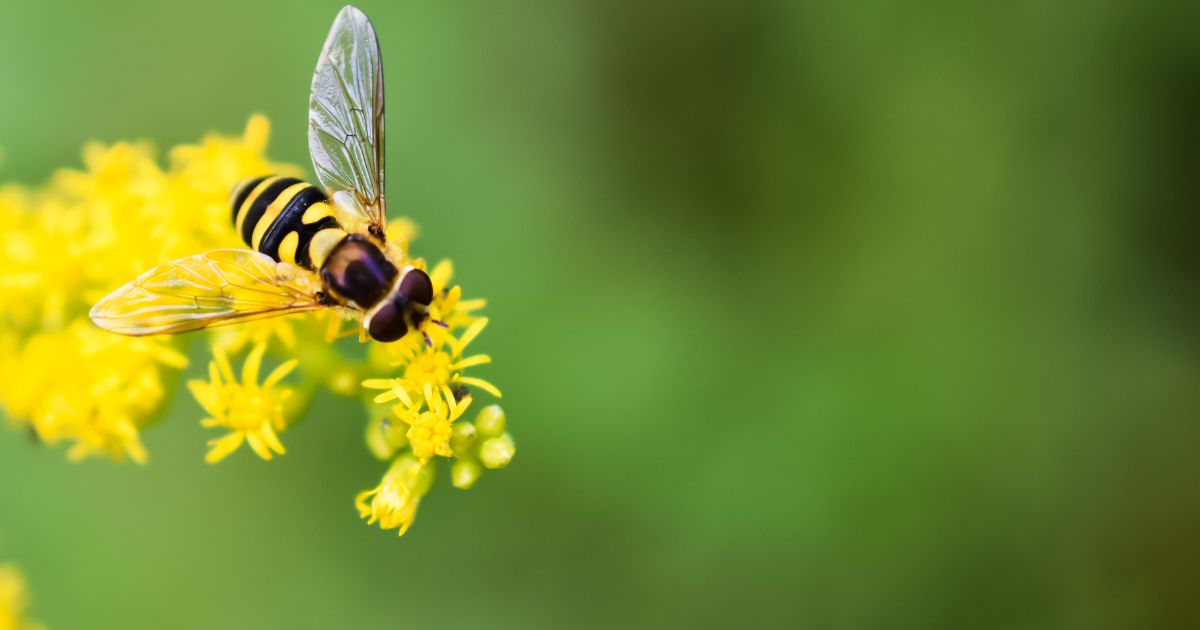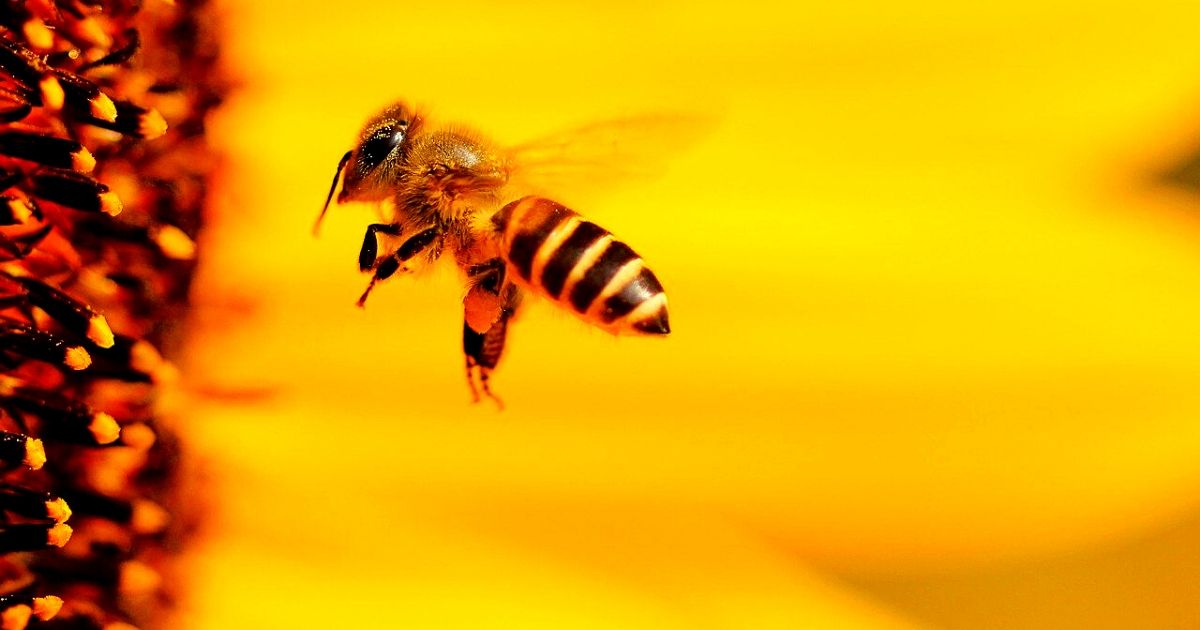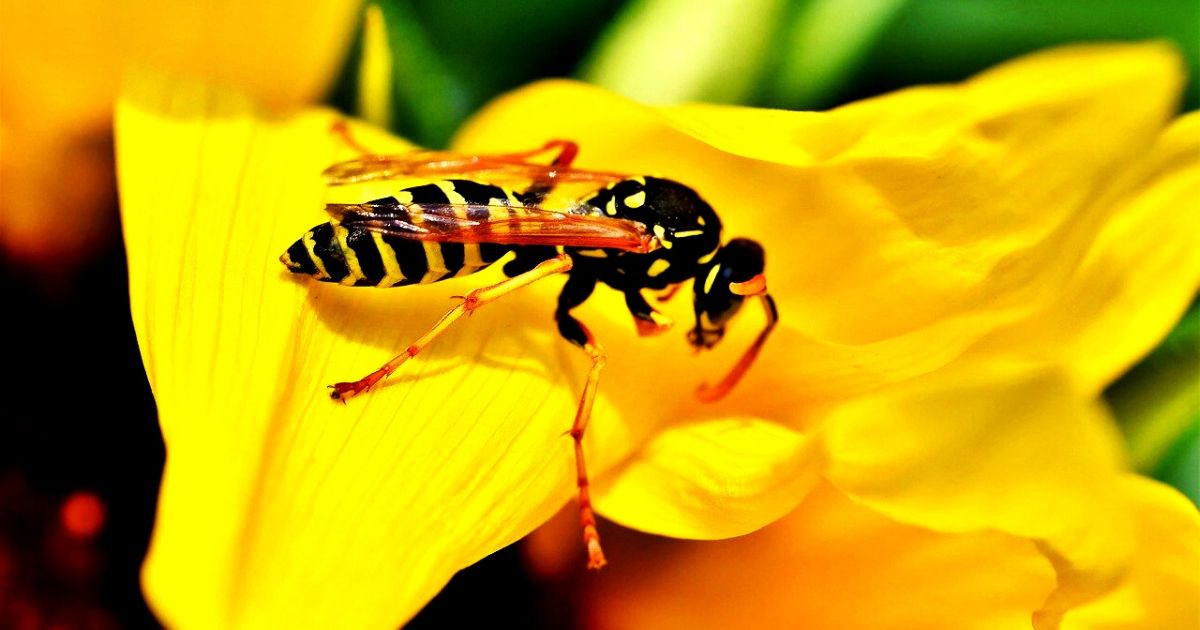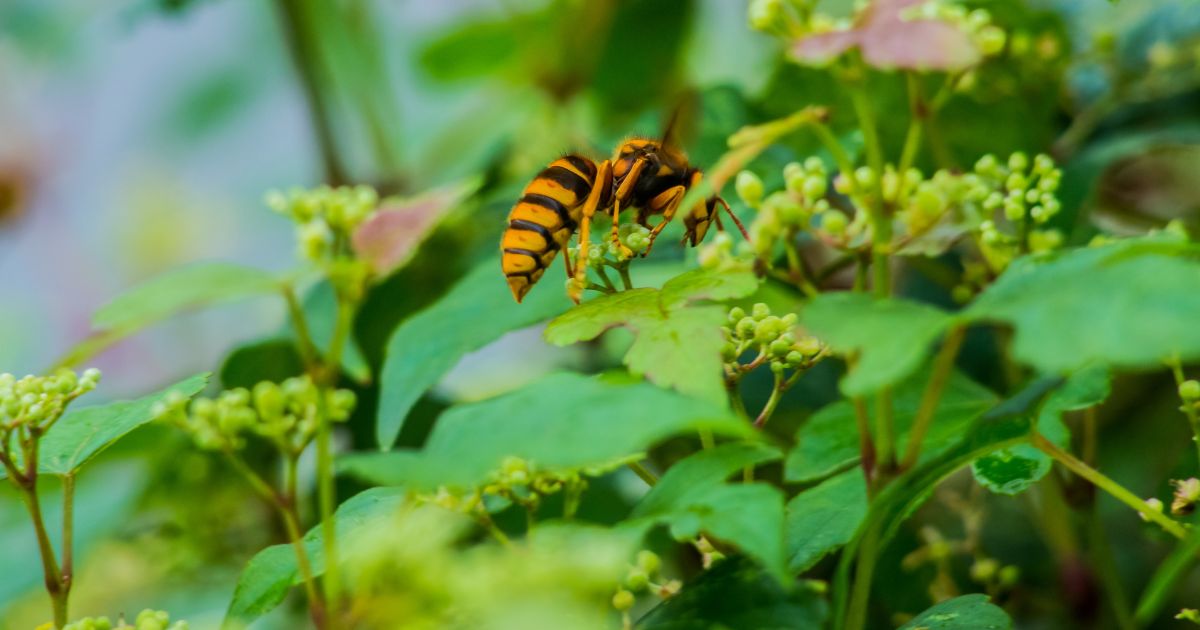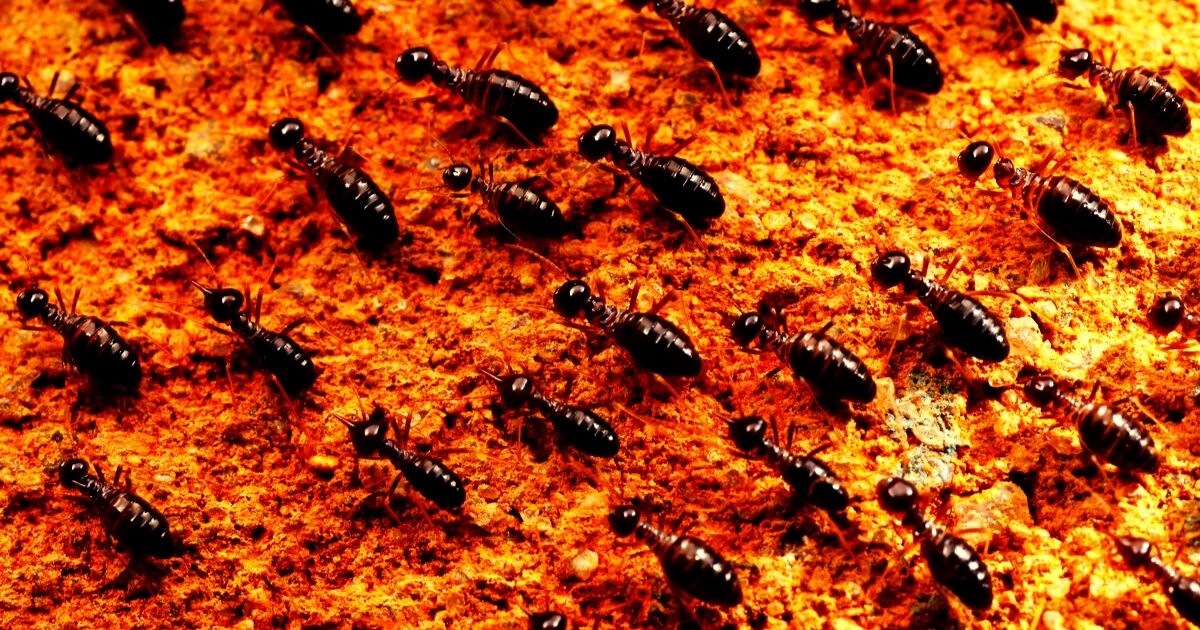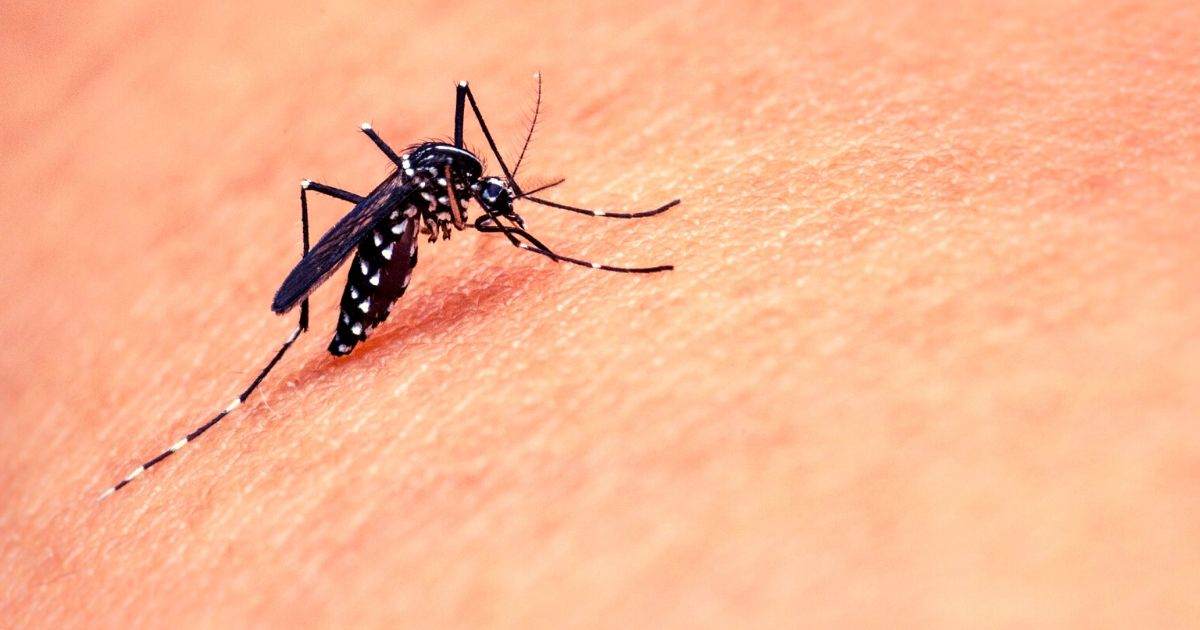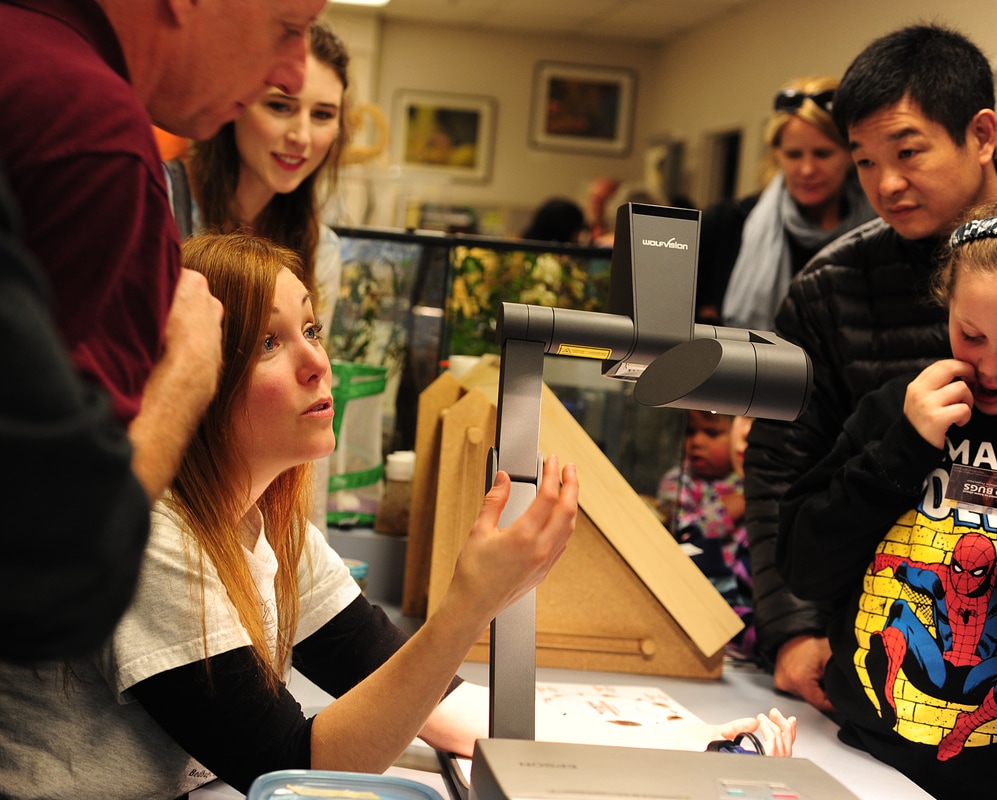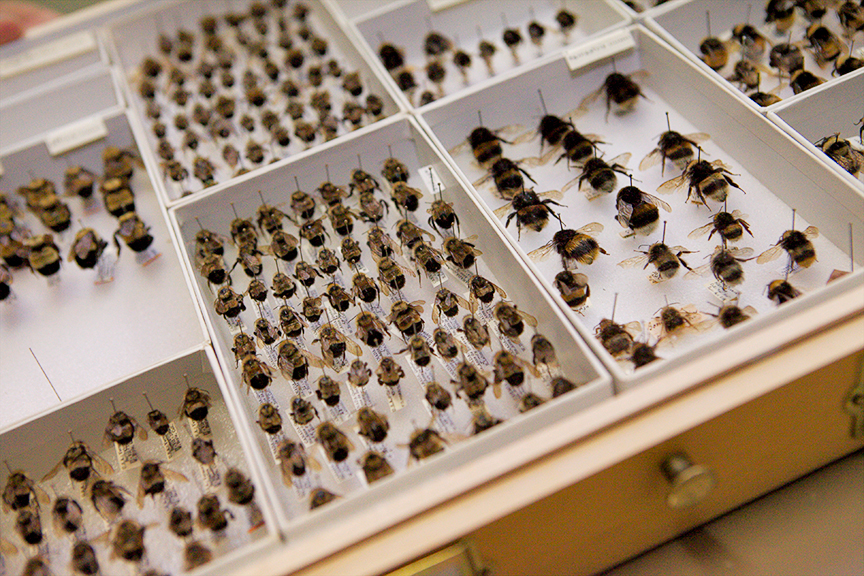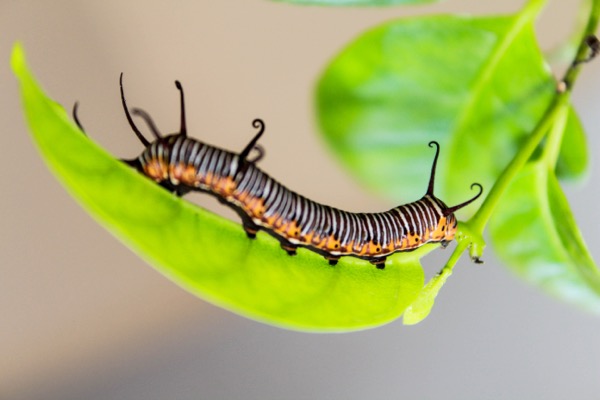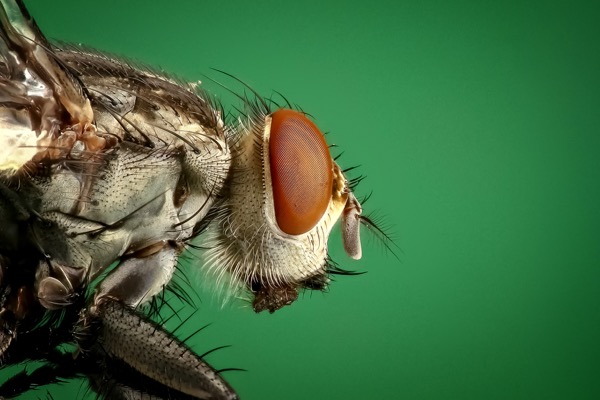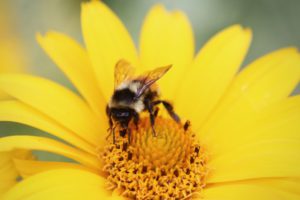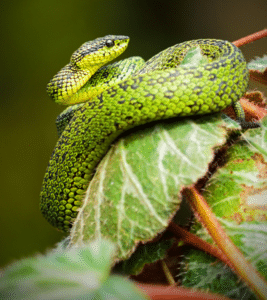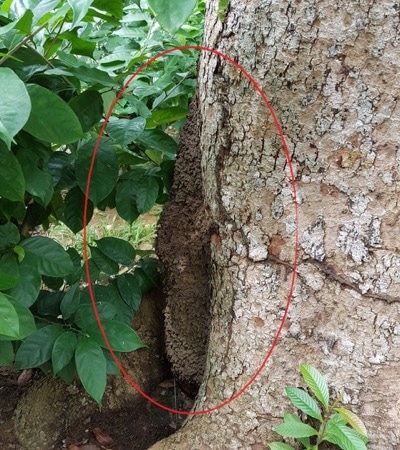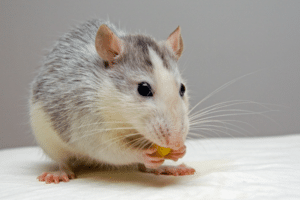Wasp vs Bee: What’s the Difference?
Insects
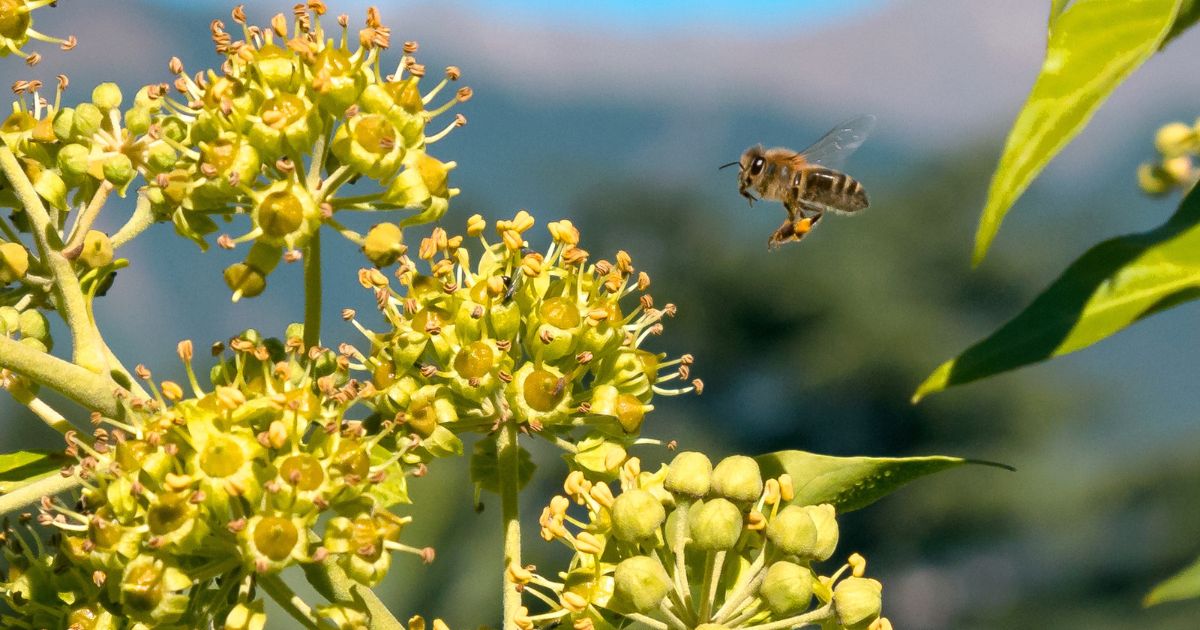
Bees and wasps may seem similar and are often mistaken for one another, however these creatures have their unique characteristics. Let’s explore the similarities and differences between these two insects, what individual traits they have, and how you can distinguish between them.
Are Wasps and Bees the Same?
No, wasps and bees are not the same. Although they both belong to the order Hymenoptera and share some similarities, they are different species with their own distinct behaviors, appearances, and ecological roles.

What You Should Know About Wasps
Wasps are predatory insects that come in various species, the most common ones being yellow jackets, hornets, and paper wasps. Here are the key factors to know about wasps:
- Predatory Nature: Wasps feed on other insects, including caterpillars and spiders, making them valuable for pest control in ecosystems.
- Nesting Habits: Wasps build nests from paper-like materials; their nests can be found in trees, shrubs, and even underground.
- Distinctive Appearance: Wasps typically have slender bodies with bright yellow and black markings. They are more slim-bodied than bees.
Want to find out more about wasp & bee removal in Singapore?
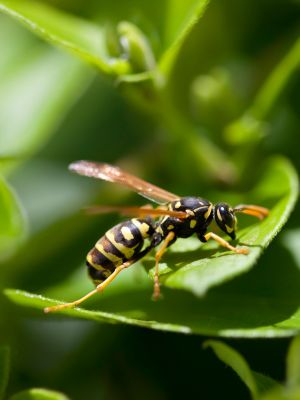
What You Should Know About Bees
Bees, on the other hand, are known for their essential role in pollination and honey production. Here’s what you should know about bees:
- Pollinators: Bees are crucial pollinators that help fertilize plants, ensuring the production of fruits, vegetables, and flowers.
- Honey Production: Honey bees are famous honey-makers – they collect nectar from flowers, transform it into honey, and store it in their hives.
- Furry Bodies: Unlike wasps, bees have hairy bodies that help pollen collection and transportation from one flower to another.
How are Wasps and Bees Similar?
Although wasps and bees are different insects, they share some similarities:
- Both wasps and bees can sting, but only wasps and some types of bees can sting multiple times, while honeybees die after the sting.
- Both wasps and bees contribute to the world’s ecology, but in different ways.
- Bees and wasps are both nectar-feeding insects.
- Both bees and wasps are most active during the warmer months of the year when flowers are in bloom.
Pro Tip: Since wasps and bees both play a vital role in our ecosystem, it’s important to consult pest control professionals when dealing with a nest problem, for safe and sustainable removal.
How Do You Tell the Difference Between a Bee and a Wasp?
Here are some key characteristics that can help you distinguish between bees and wasps:
- Body Size: On average, bees are smaller – up to 15mm in length, while wasps can be up to 20 mm in length.
- Body Shape: Bees generally have rounder and furrier bodies, while wasps tend to have slimmer bodies and are less hairy.
- Coloration: Bees are often covered in brown, black, or yellowish fuzz, whereas wasps typically have distinct yellow and black markings or may be brown or reddish.
- Behavior: Bees are less aggressive compared to wasps. Bees are typically focused on pollination and are less likely to sting unless provoked, while wasps can be more aggressive and may sting in defense or when they feel threatened.
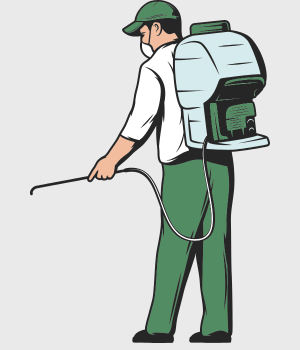
Unwanted Guests? We're Here to Help.
We offer safe and efficient wasp removal and bee relocation services, ensuring the safety of your home or business while caring for the environment.
Recognizing these differences can help you better understand and coexist with these valuable creatures in our ecosystems. Remember to exercise caution and respect when encountering either of them, as both play vital roles in our world and can also sting when feeling threatened.
Author: Soleha Nisaa
Frequently Asked Questions
No, a wasp is not a bee. Wasps and bees are two different insects, although they share some similarities due to their common classification.
Wasps and bees are related within the same order, but are distinct insects with different appearances, behaviors, diets, and ecological roles. While hornets are a type of wasp, they also have distinct characteristics, including their larger size, distinct black and white or reddish-brown coloration, and nest-building habits.
Wasps have minimal or no hair on their bodies. Unlike bees, which have fuzzy bodies covered in hair. This lack of hair is one of the key distinguishing features between the two insects.
Yes, wasps are generally considered to be more aggressive than bees. Wasps can be more territorial and aggressive in defending their nests, and are more likely to sting if they perceive a threat. Bees, on the other hand, are more likely to sting when they believe their hive is in danger.
No, not all bees make honey. Honey bees are the primary species known for honey production. Other bee species may not produce honey at all.
To coexist peacefully, avoid disturbing their nests, wear protective clothing if necessary, and keep food and sweet beverages covered during outdoor activities. If dealing with a nest problem, consider consulting a pest control professional like Killem Pest for safe and sustainable removal.
Related Posts
How to Get Rid of Gnats
Insects
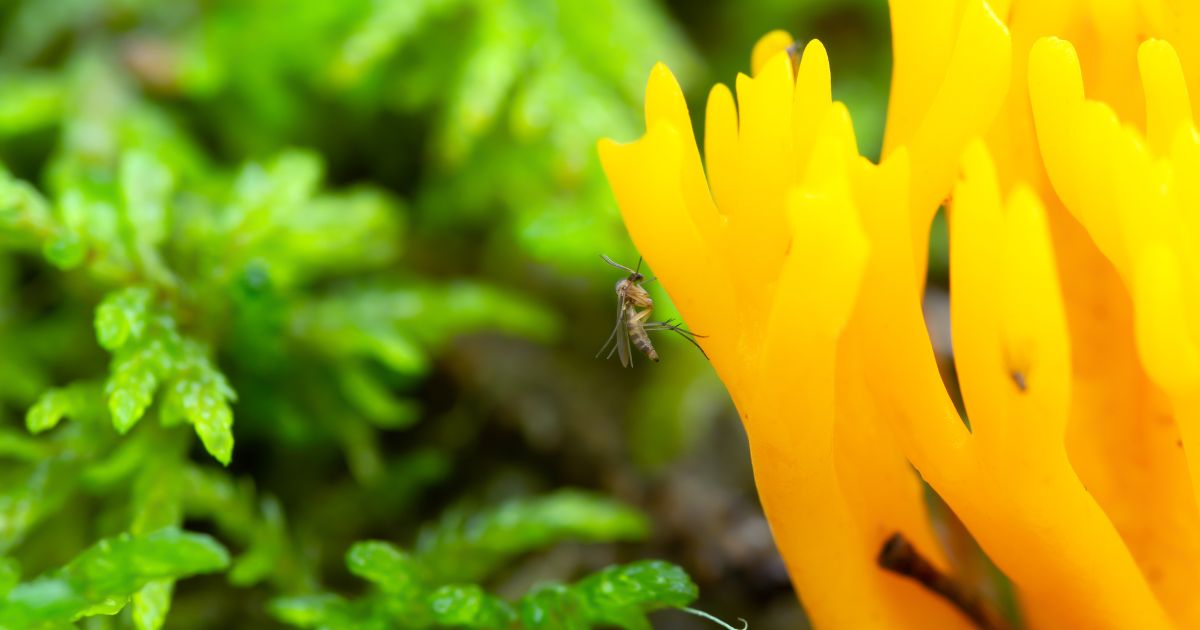
Gnats are tiny flying insects that seem to appear out of nowhere, but can quickly become a problem in both your home and garden. While they might not be as destructive as some other pests, their presence can be quite frustrating. Good news is there are some effective methods that can help you to get rid of gnats and prevent them in the first place.
What Are Gnats?
Gnats are small, thin flying insects that are known for their swift and agile flight patterns. Adult gnats are typically less than 1/4 of an inch long with yellowish, tan or dark brown color.
Do Gnats Bite?
Not all types of gnats bite, but some that feed on the blood can bite and even transfer some diseases, like:
- Food poisoning caused by germs, e.g. salmonella
- Conjunctivitis
- River blindness
- Sleeping Sickness
- Oropouche Fever
Gnat bites can cause discomfort and itchiness. However, the majority of gnats are more interested in feeding on decaying matter.
Where Are Gnats Usually Found
Gnats are commonly found in a wide range of environments, from outdoor areas like gardens, compost piles, ponds and damp woodlands to indoor spaces such as homes and offices.
The specific habitats and preferences of gnats can vary based on their species. Depending on the type of gnats, you can find them in:
- Kitchen sinks and bathrooms – this is a sign of drain fly infestation. They are attracted to moisture and decaying organic matter in the drain.
- Houseplants and outdoor plants – this is a sign of fungus gnats infestation. These gnats are attracted to overwatered plant roots, soil and leaves.
- Decaying fruits and vegetables – this is a sign of a fruit fly infestation.
Want to find out more about gnats and other pest treatments in Singapore?
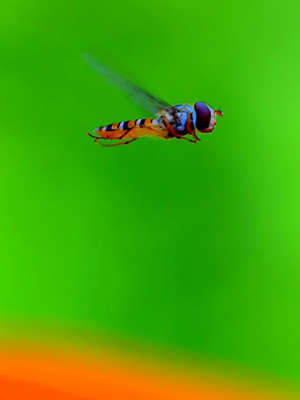
How to Get Rid of Gnats in the House
Gnats are drawn to moisture and organic matter in homes, so here’s how to effectively get rid of the gnats in your home:
Identify Breeding Sites. Search for damp areas of your home with excess moisture, like sinks, drains, and potted plants.
Eliminate Moisture. Fix leaky pipes, dry out wet areas, and ensure proper ventilation to reduce the moisture that attracts gnats.
Dispose of Spoiled Fruit. Keep your kitchen clean and promptly get rid of any overripe or rotting fruits.
Use Vinegar Traps. Create vinegar traps by placing a small bowl of apple cider vinegar with a few drops of dish soap. The vinegar attracts gnats, while the soap breaks the surface tension, causing them to drown.
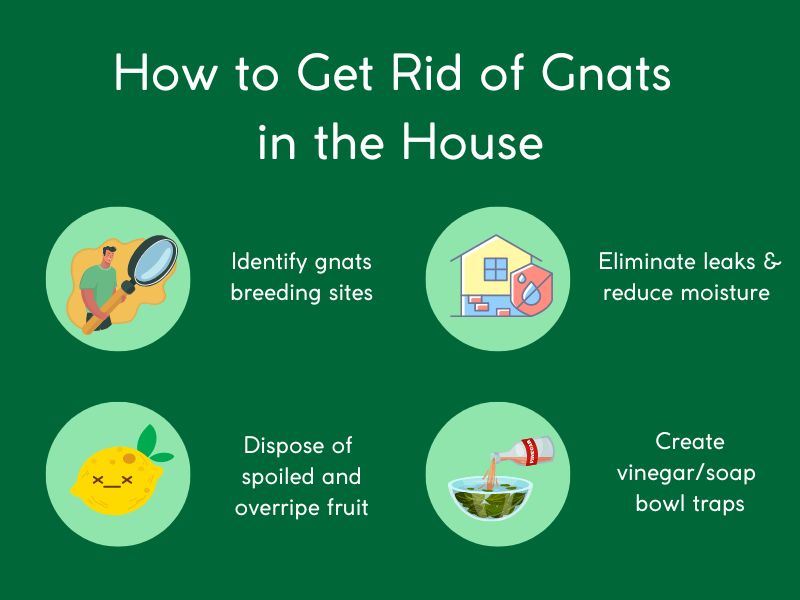
How to Get Rid of Gnats in Plants
Indoor and outdoor plants can become infested with gnats, so here’s how to manage gnat infestations in plants:
Allow Soil to Dry. Gnats thrive in overwatered plants with damp soil. Allow the top layer of the soil to dry out before watering your plants again.
Use Sticky Traps. Place yellow sticky fly traps near your plants. Yellow color will attract gnats and they will get stuck in the traps.
Repot Plants with Fresh Soil. If the infestation is severe, consider repotting your plants with fresh, well-draining soil to remove gnat eggs and larvae.
Preventive Measures: Managing Gnats Outdoors and Indoors
Preventing gnat infestations is the best way to avoid dealing with them in the first place. Here are some effective ways to prevent gnats:
- Don’t overwater plants
- Remove standing water, regularly empty containers that collect rainwater to reduce breeding sites for gnats
- Fix plumbing drain leaks and prevent food build-up
- Trim grass and shrubs to reduce hiding places for gnats
- Keep your home clean, regularly clean up crumbs, spills, and dirty dishes
- Throw out spoiled fruits and vegetables and take out the garbage on a daily basis
- Seal entry points like cracks and gaps in the foundation, or around doors and windows
Pro Tip: The best way to get rid of gnats is to prevent the gnat infestation in the first place.
When to Call Pest Control: Signs of a Severe Gnat Infestation
In some cases, a gnat infestation can become a problem and professional intervention is then necessary. Signs of a severe infestation include:
- Persistent swarms, or if you notice large numbers of gnats indoors, despite your efforts
- Plant damage, like if your plants are showing signs of stress and you’ve tried various methods to control the gnats
- Health concerns, as some people might experience allergic reactions or respiratory issues due to gnat infestations
While gnats can be irritating and annoying, you can effectively manage the infestation with a combination of preventive measures and targeted solutions. By understanding their habits and taking appropriate actions, you can maintain a gnat-free home and garden. If the infestation becomes severe, do not hesitate to seek the help of pest control professionals like Killem Pest.

Pest Problem? Let Us Help.
We offer fast and effective precision treatments to eliminate pests while ensuring a safe environment for your home or business.
Author: Soleha Nisaa
Frequently Asked Questions
Common signs of a gnat infestation include noticing numerous small flying insects indoors, especially around plants or areas with moisture. You might also see larvae in the soil of potted plants or near sources of decaying organic matter.
While most gnats do not pose significant health threat to people, certain species can transmit diseases. The risk of disease transmission from gnats is generally lower compared to other vectors like mosquitoes.
Gnats are generally not harmful to pets, but their presence can be annoying for animals and humans alike. Biting gnats, like sand flies, can potentially bite pets and cause discomfort.
Yes, many DIY remedies can effectively control gnat populations. However, it’s important to address the root cause of the infestation, such as eliminating breeding sites and improving sanitation, for more long-term results.
Yes, certain essential oils like citronella, eucalyptus, and lavender can act as natural gnat repellents. You can dilute these oils in water and use the mixture as a spray to deter gnats from indoor and outdoor areas.
Natural Remedies for Insect Bites
Insects

Not everyone feels comfortable using certain insect bite medications because of their potentially harsh ingredients. For people suffering from insect bites but dissatisfied or uncomfortable with chemical solutions, there are natural remedies that can help soothe irritation and swelling. Some can also reduce redness and even repel pests like mosquitoes due to their scent.
So, what can someone do to stop uncomfortable sensations?
Baking Powder
One of the first available solutions is to mix baking powder with unscented body lotions.
The baking powder reduces inflammation and redness while the lotion holds it in place.
Anyone who has ever worked with baking powder knows that it refuses to stay in one location for long, so it is important to find a mild adhesive to help! The mixture can be left for ten minutes and then wiped away with a damp cloth. As it is mild, affected people can reapply the mixture as often as needed. A similar material is oatmeal, which can be mixed with water and then applied as a paste.
Soothing Aloe
Another potential remedy is aloe vera. This spiky plant produces a thick, sticky gel inside of its tendrils which can be scooped out and applied to insect bites, burns, and other forms of skin irritation.
Pro Tip: Aloe vera's composition helps sooth bites and redness and contains a healthy amount of water and antioxidants.
To this day, it is one of the only natural remedies which is also frequently used by doctors, pharmaceutical companies, and the beauty industry. Chances are that if someone has received a sunburn, they have used aloe vera. The same properties that calm these burns also help fight back against the irritation of insect bites.
Mint Paste or Honey
People who are not afraid to deal with stickiness can use common household items like toothpaste or honey. Mint toothpaste is especially potent because the mint cools the affected site and can numb pain and discomfort while reducing swelling and redness.
Honey possesses antibacterial properties that can help prevent some common forms of skin irritation.
The thick substance additionally helps stop itching and can keep children from scratching at insect bites. Both items can be bought from local grocery and general stores, making them quick remedies to a common problem.
Essential Oils
Finally, there are products with calming scents and properties.
One method individuals can use is to develop a peppermint paste, which cools the inflamed and annoying site of an insect bite.
Chickweed has a similar effect and can be found at many herbal stores. Another common natural remedy is the use of essential oils, which have gained popularity in recent years. Tea tree oil has been shown to be particularly effective because of its antiseptic properties, while lavender and peppermint have similar effects and a more nuanced smell. The only downside to these methods is that the scents can be irritating to people with sensitive noses or skin, so they might need to be diluted.
Hot or Cold Compress
The immediate reaction to an insect bite is often an urge to scratch it, but this can lead to further irritation. Instead, try applying cold compress of crushed ice wrapped in a cloth to the affected area. The cold will help reduce swelling and numb the itching sensation. Don’t put ice directly on your skin as it can cause damage.
A warm compress may also be a solution for itching and inflammation caused by insect bites. Just soak cloth in warm water and apply them to insect bites for relief.
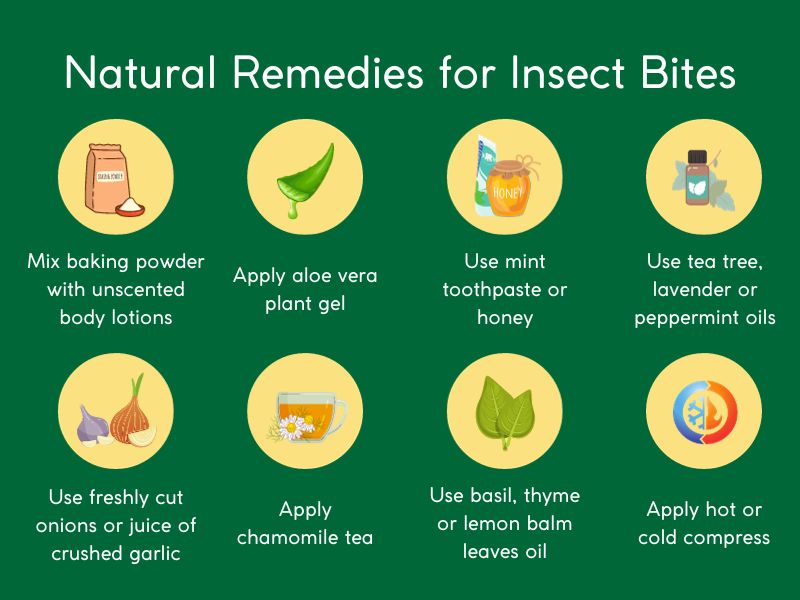
Herbal Therapy
Some herbs like basil and thyme are known for their anti-inflammatory and antibacterial properties. To reduce itching and prevent infection, crush fresh basil leaves to release their natural oils, then apply them directly to the insect bite. You can also create a thyme-infused oil by steeping thyme leaves in olive oil for a few days.
Lemon balm, a member of the mint family, is also used for soothing insect bites. Crush fresh lemon balm leaves and apply the juice directly to the bite.
Kitchen Remedies
Some vegetables can also provide relief from itching. Try applying slices of freshly cut onions or juice of crushed garlic to the bite. Alternatively, you can also apply onion juice to the affected area.
Chamomile Tea
Chamomile tea is also known for its calming and soothing effects. Prepare a cup of chamomile tea, let it cool, and then apply it to the affected area using a clean cloth or cotton ball. You can also place used chamomile tea bags directly on the bite.

Pest Problem? Let Us Help.
We offer fast and effective precision treatments to eliminate pests while ensuring a safe environment for your home or business.
Conclusion
Most of these natural remedies can be found at regular stores, and some are even used in pharmacies as common treatments. By using one of these solutions to insect bites, individuals can prevent potential further irritation from the bite and the chemicals in more processed materials like antihistamine creams. Nevertheless, if swelling and irritation persist after trying these home remedies, you should follow up with your GP to be prescribed the appropriate treatment.
Frequently Asked Questions
Some insect bites can cause flu-like symptoms, including fever. Fever can also be a symptom of more serious diseases that certain insects can transmit to people.
Sometimes insects can cause severe allergic reactions or spread serious illnesses if the insects carry certain viruses or parasites.
Bites from more dangerous insects poisonous spiders or insects that transmit diseases are dangerous and can be deadly, so it’s important to immediately get medical help.
Related Posts
The Best Insect Museums in the World
Insects

Many people around the world are disgusted and repulsed by insects, but many others find them fascinating. Scientists and philanthropists established museums in different nations so people can learn about and understand them without having to interact with live specimens.
Perhaps the most notable feature of each organization is their continued emphasis on education and research to continue to enhance the world’s understanding of insects, which outnumber humans 200,000,000 to 1.
Nawa Insect Museum
Yasushi Nawa established the Nawa Insect Research Center in 1896, and the organization eventually developed the Nawa Insect Museum so the general public could enjoy their collection. It is located in Gifu, Japan and features an extensive collection of over 300,000 specimens from 12,000 different species.
Each exhibit of insects is organized by species and contains specimens from South America, Southeast Asia, Africa, and the Middle East.
Each owner of the Insect Museum has been a member of the Nawa family, and continues to expand the collection using specimens from primarily hot climates.
The majority of the insects are beetles and butterflies, with additional exhibits featuring termites, moths, hornets, dragonflies, and several arachnids.
Image source: http://www.japanvisitor.com/japan-museums/nawa-insect
Richard M. Bohart Museum of Entomology
The Bohart Museum of Entomology is one of the largest insect collections in the United States and is located on the campus of the University of California in Davis. There are more than seven million specimens in the museum’s collection, and it is used as a public attraction and center for undergraduate and graduate research.
Their specimens come from all over the world, and some of the most important collections available for viewing include: the world’s largest collection of tardigrade water bears; the Ferris-McKenzie scale insect collection; and the H. Tyler swallowtail butterflies. The museum curates travelling exhibits and also features children’s educational programs.
Image source: http://bohart.ucdavis.edu/news-and-events.html
Insect Science Museum
The Insect Science Museum of the Zhongzheng District in Taipei, Taiwan is perhaps the only comprehensive insect collection to be located at a high school. It was constructed in 1968 and opened to the public in 1971. Like many other museums, education was a priority of its development and it continues to perform numerous services for the community.
Teachers visit the Insect Science Museum to learn how to teach their students about insects and introduce the subject of entomology. It also shows the public many slides and educational films to teach their audiences about special insects and their crucial function in various ecosystems.
Finally, the museum sponsors competitions and academic research related to the insects, and continues to be a powerful feature in the academic community of Taiwan and the larger entomologic field.
Killem Pest Interview with Leading Entomologist Dr How Yee Fatt

Lyman Entomological Museum
The Lyman Entomological Museum houses a collection of over 2.8 million insects and arthropods subdivided into multiple groups based on type.
It is a natural history museum in Saint-Anne-de-Bellevue in Quebec.
It is part of McGill University and is the largest university collection in Canada. Because Henry Lyman, the founder of the museum, was an avid lepidopterist, the museum hosts a fantastic butterfly collection with many exotic types.
It also possesses over 250,000 specimens of beetle with a large collection of West African scarabs and other species. The general public can visit the museum, and it also fosters intense academic study due to being attached to a college.
Natural History Museum
A visit to the Natural History Museum in London is highly recommended. The museum has more than 34 million insects, one the largest insect collections in the world. The Natural History Museum includes the following insects:
- Bees
- Beetles
- Butterflies
Smithsonian National Museum of Natural History
The Smithsonian National Museum of Natural History in Washington D.C. has a huge collection of insects. Visitors can interact with live butterflies and visit the so-called Insect Zoo.
Interesting fact: Insects outnumber humans 200,000,000 to 1.
Naturhistorisches Museum Wien
One of Europe’s best museums for insect is the Naturhistorisches Museum Wien, located in Vienna, Austria. The museum has a large collection of insects, including:
- Beetles
- Butterflies
- Moths
Museo del Instituto de Biología de la UNAM
The Museo del Instituto de Biología de la UNAM in Mexico City showcases a large collection of insects that are present in Mexico and other parts of the world, and includes:
- Beetles
- Butterflies
- Moths
Museum of Natural History
Paris cannot be excluded from this list. Its Museum of Natural History is a must-visit for entomologists and insect enthusiasts. There are a wide variety of rare insect species found in the museum.

Pest Problem? Let Us Help.
We offer fast and effective precision treatments to eliminate pests while ensuring a safe environment for your home or business.
Frequently Asked Questions
A bug museum or exhibit of live insects is often called an insectarium. They display a variety of insects and bugs, like spiders, ants, cockroaches, millipedes and centipedes, and others.
The Montreal Insectarium is the largest insect museum in North America and one of the largest insect museums worldwide – currently, visitors can see more than 3,000 species of insects.
Related Posts
What is Entomophobia?
Insects
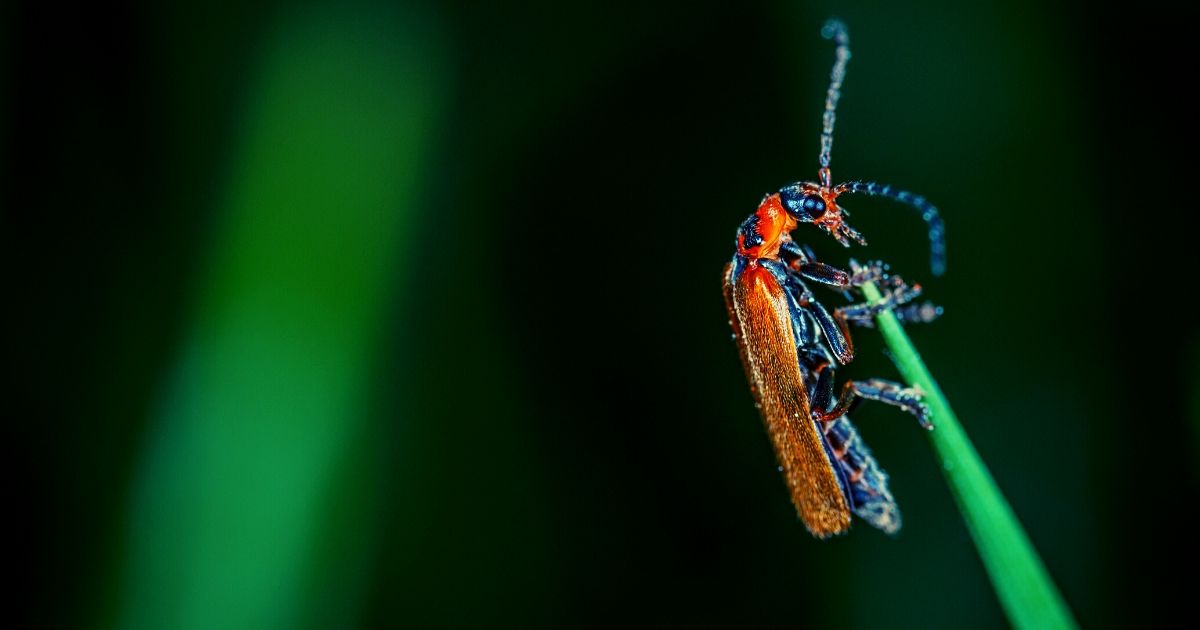
In our previous Interview with Leading Entomologist Dr How, Dr How gave us an introduction to the term ‘entomology’. To recap, entomology is the study of insects, though some people use it to colloquially refer to bugs of all kinds, including spiders. People who study insects are called entomologists. The word is based on Greek, where “entomon” means “insect” and “logia” means “the study of.”
It is an interesting field that often intersects with other academic disciplines, including genetics, physiology, biology, and chemistry.
At present, there are more than 1.3 million species of insect in the world, which make up 2/3 of the planet’s entire population. Thanks to entomologists, humans understand many things about a type of creature which outnumbers them by a factor of several hundred.
What is Entomophobia?
While entomologists enjoy studying insects, many other people are repulsed by them. Worse still, there are some people in the world who suffer from entomophobia, or the intense fear of insects.
People with entomophobia have:
- An irrational fear of insects and will often take great pains to avoid them.
- Many sufferers will experience horrific anxiety and terror simply from seeing an insect or thinking about one.
- It can also be subdivided into additional phobias like myrmecophobia (the fear of ants) and apiphobia (the fear of bees).
It is important to distinguish entomophobia from a general fear of bugs.
Many people with entomophobia know that insects pose no real threat to them, but they still experience a persistent sense of anxiety around them.
There have been many cases of a sufferer thinking about an imaginary insect and being thrown into a panic attack. Often, sufferers will go out of their way to avoid encountering an insect: some will completely change their route to work if they see an ant, or will refuse to go outside at all.
Ultimately, the main characteristic of entomophobia is that the fear must be constant, irrational, and debilitating for the sufferer.
What Causes Entomophobia?
There are several possible causes of entomophobia. One of the most commonly heard causes is people’s past experiences with insects. Let’s say you encountered a cockroach or a rodent years ago, and it freaked you out. This may leave a deep imprint in your mind. Some may even call it a traumatizing experience.
Another cause could be a direct health threat from insects. An allergic reaction to a bee sting can cause entomophobia.
People around us have a big influence on how we think and look at the world. If any of your close relatives suffer from anxiety or phobia, it can increase your risk of entomophobia. Another way is when you hear friends or family talking about their fear of insects.
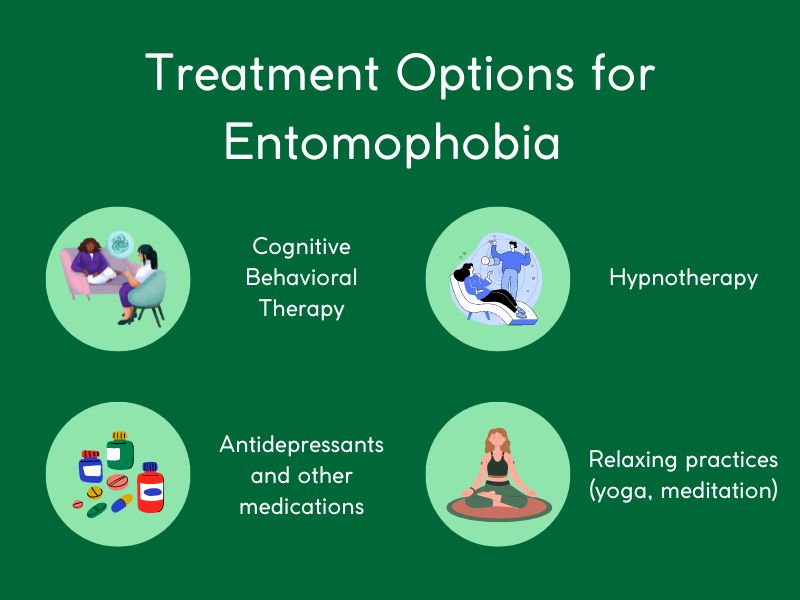
How is Entomophobia Treated?
Thankfully, modern medicine and psychology have developed coping strategies for people who have entomophobia. One of the most common methods is systematic desensitization, where somebody slowly exposes themselves to their fear.
Some examples would be a person who looks at a photo of an insect one week. Next week, they work up the courage to touch the picture. A week later, they visit a zoo and watch the insect move around. Possibly the week after that, they could touch the insect and see it means them no harm.
Pro Tip: It is recommended that a person receive help from a therapist so they do not try to do too much DIY methods at once.
Another, less common, method that can be used is hypnosis. During hypnosis, a person is placed into a trancelike state by a trained professional. The hypnotist then talks to the patient to determine the source of their fear, and can begin to help them cope.
Often a hypnotist will start small by suggesting to their patient that they do not have a reason to be afraid of insects. They can then implant the thought that when the patient awakens, they will no longer have entomophobia. They will face their fears head on and will no longer be afraid. For this method to work, a person needs to believe in hypnosis, and it often takes many sessions.
Either way, patients can use both methods to help them overcome entomophobia, a real condition which can cause unnecessary strain on its sufferers.
The Cleveland Clinic mentions several techniques that may help treat and overcome entomophobia, including:
- Cognitive Behavioral Therapy (CBT)
- Hypnotherapy
- Antidepressants and other medications
- Relaxing practices such as yoga and meditation

Pest Problem? Let Us Help.
We offer fast and effective precision treatments to eliminate pests while ensuring a safe environment for your home or business.
Frequently Asked Questions
Yes, entomophobia and insectophobia both mean the fear of insects. People with this phobia feel anxious when they see or think about insects.
Entomophobia is considered a relatively common fear around the world. For example, it is estimated that around 6% of adults and 10% of children in the US struggle with entomophobia.
If you feel anxious or experience physical symptoms like itching and crawling sensation under your skin when thinking about insects, and/or you avoid getting in contact with insects, you might have entomophobia.
Entomophobia can significantly impair a person’s quality of life. Common complications associated with entomophobia include anxiety and panic attacks, avoidance behaviors that can also lead to social isolation, secondary phobias, such as agoraphobia (fear of open spaces) or acrophobia (fear of heights), sleep disturbances, and even physical health issues.
Related Posts
What Common Pests Are Found in Your Garden?
Insects
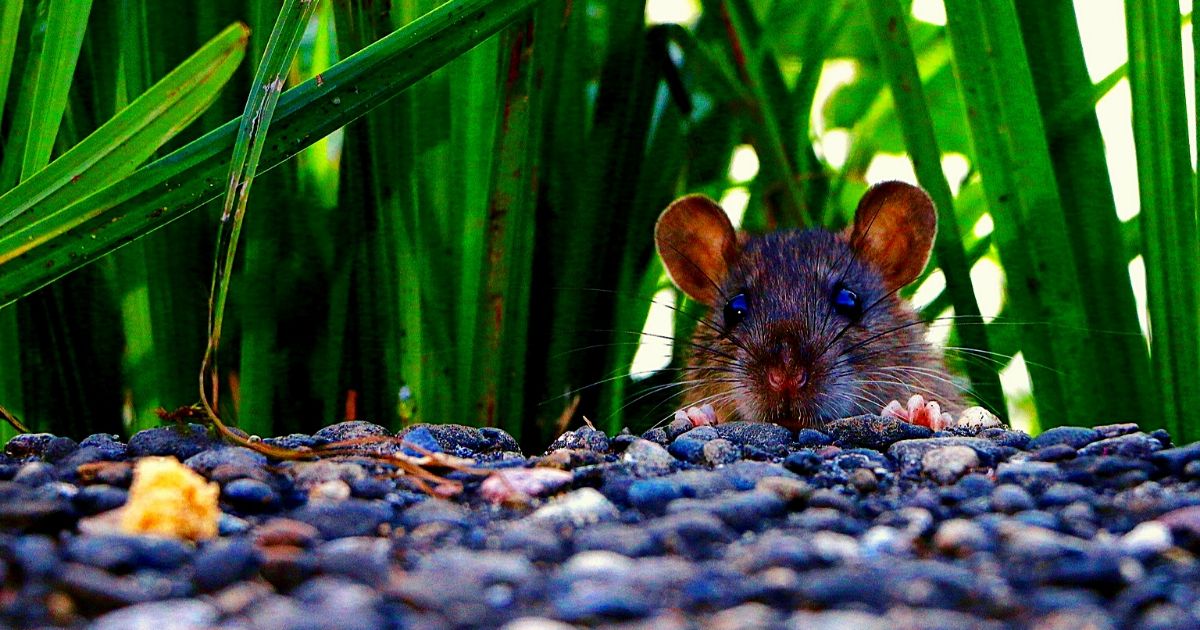
You may love spending time in your backyard and tending to your garden. Your children and pets also enjoy playing outside. Perhaps you grow flowers, or vegetables and fruit for you and the family to eat. However, many different types of pests enjoy the garden just as much as you do, and that can be a problem. Let’s take a look at some of the most common pests that like to hang out in the garden.
Table of Contents
Bees and Wasps
If you see a bee or two in your garden, it’s not usually a sign to worry. In fact, bees are essential for pollination, and they can do your garden, and the rest of the gardens in the area, a favor. However, when it comes to wasps, or if you have too many bees that are causing problems, you may want to contact a bee or wasp removal specialist to have them removed because the stings are not only painful, but may also be fatal to people that are allergic to bee and wasp stings.
Snakes
Most people hate seeing snakes in the garden, and they do have the potential to be a problem.
If you have non-venomous snakes that are small and not overly aggressive, they can help to control the rodent population, which is another garden pest we will discuss.
However, if the snakes are venomous, if it is very big, if you are unsure about them, or if you simply have a fear and dislike for snakes, you should have them removed as soon as possible. This is an especially good idea if you have children or pets.
Termites
If you notice termite mounds in your garden, this is a very bad sign and an indication that you already have an infestation. While those termites will not be interested in the flowers and vegetables you are growing, they will be interested in marching to your house so they can start eating the wood so get a termite control specialist in to remove them as soon as possible.
Rodents
Rodents in the garden can be very destructive. They may start to eat at the items you are growing, and they are disease carriers. Nothing good comes from having rodents in the garden, and they may also decide to move inside your home where they can get at even more food and cause more issues.
Mosquitoes
Mosquitoes are very dangerous, not just annoying. These pests carry diseases, such as the Zika Virus and Dengue. They breed in areas of standing water, which could be a bird feeder, a puddle, or a water collection bin. It is always a good idea to have someone take care of the mosquitoes before they become a problem.
Want to find out more about pest removal in Singapore?

Ants
Depending on the types of ants in the garden, it might not be a problem.
Smaller ants can help with the pollination as they are crawling around the garden, and they can also help to keep caterpillars and other types of pests at bay.
They do not generally cause issues by eating anything in the garden, but if you have a lot of ants, they could always decide to head inside. It might still be a good idea to contact pest control.
Pest Control for Gardens
We have a list of the common garden pests in Singapore. Now let’s discuss some natural ways to protect your garden from pests.
Apply the following solutions to keep most common garden pests away:
- Citronella plants to prevent mosquitoes.
- Avoid overwatering to reduce high levels of dampness, as this attracts many types of pests.
- Dust off the leaves of plants to eliminate potential nesting sites.
- Dish soap mixed with water in a spray bottle can help get rid of many pests that settle on plants.
Pro Tip: Some natural remedies can be ineffective and make pest problems worse, so the best way to get rid of garden pests is to call a professional for help.
What Should You Do?
If you have pests in the garden, the best way to get rid of them is to call a professional for help. They can come and look at your problem, and then determine the best way to proceed and to provide you with a pest free environment.
If you would like more information on how Killem can help you keep your garden pest free, visit our residential pest control services page.

Pest Problem? Let Us Help.
We offer fast and effective precision treatments to eliminate pests while ensuring a safe environment for your home or business.
Frequently Asked Questions
Pests can cause major damage to your garden. They can chew holes in your leaves and feed on roots, which kills the plants.
Sometimes pests are not visible, but you can identify them by the damage in your garden, like holes in leaves, small grubs around the roots of container plants, and skeletonized leaves.
The best way to get rid of the pests is to prevent the infestation in the first place. Check your plants regularly and take measures as soon as you spot the signs of infestation.


